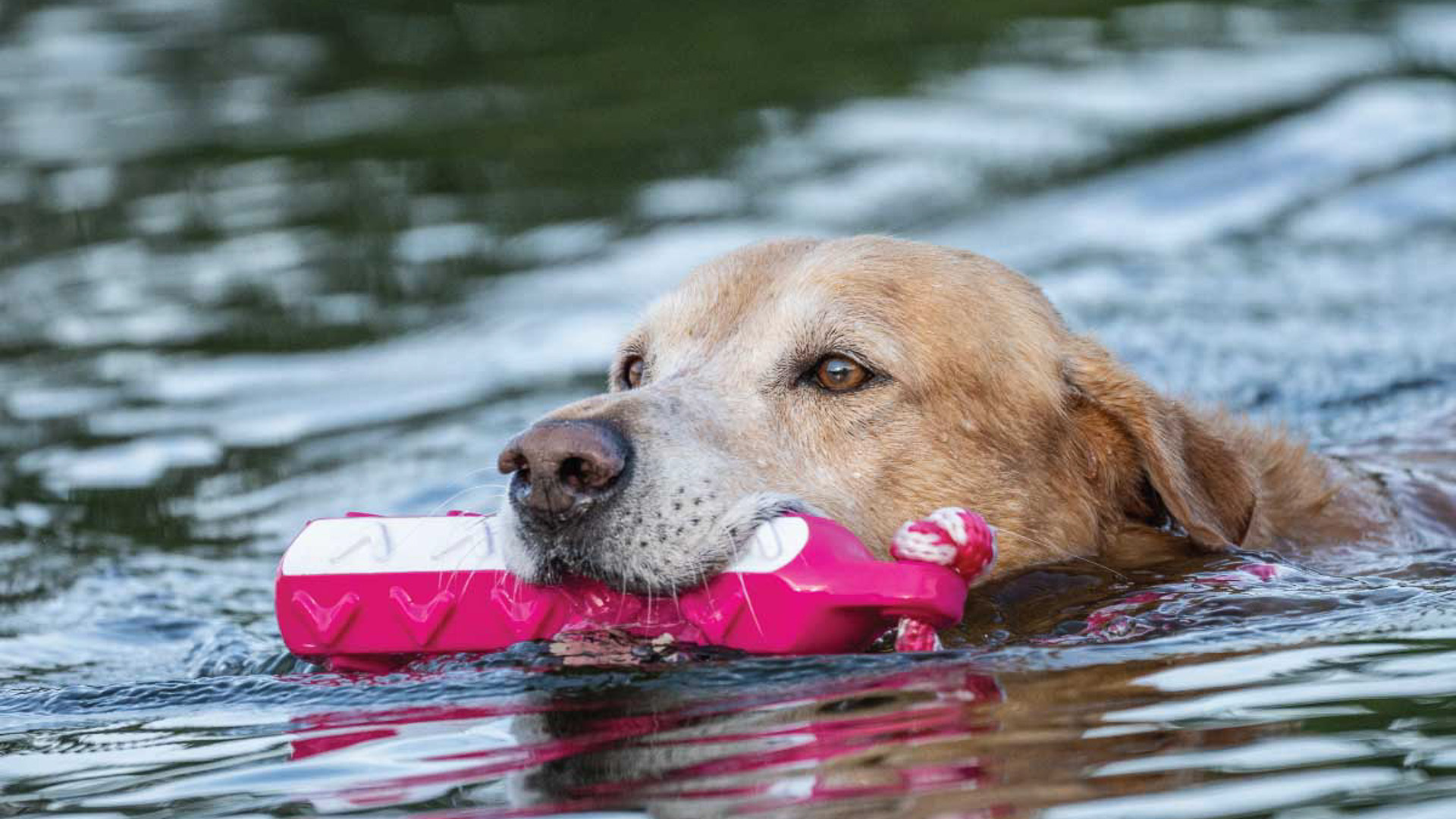
Research suggests that dogs learn best in short, focused training sessions spread out over time. Whether you’re looking to teach your dog how to canicross, run an agility course or how to fetch, here are some tips for helping him learn new skills.
Set Realistic Training Goals
Before you get started, think about what you’re trying to help your dog learn. Activities like trail running or bikejouring require a dog to have basic obedience skills such as come, sit, stay, and heel. After that, you can work with him on the advanced skills like running with a harness. By knowing the skills you want your dog to have you’ll be better prepared to develop a plan to help him master them.

Use Positive Reinforcement Techniques
Dogs respond well to praise and rewards. They tend to be more willing to do things that earn them a reward. Consider using training treats as you work with your dog to learn new skills. And always encourage your dog with a happy, upbeat tone and a pat on the back for a job well done.
Create a Training Routine
Establish a consistent schedule for training. Dogs like routines as they gain confidence from the regularity. Set up a time to train and try your best to stick to that program. If you work with your dog before work, on a lunch break, or after work he’ll know that the fun time is approaching and will be excited to go.
Keep Sessions Short
Plan for short 15-minute sessions every day or every other day as opposed to training for an hour once a week. Short sessions help dogs stay focused. Work with your dog on learning one objective at a time. Stay with that objective until he has mastered it. Then move on. Continuous repetitions are a grind, and dogs will look at it as work. Keep it fun and enjoyable and they’ll respond with focus and enthusiasm.

Be Consistent with Commands
Dogs need simple and consistent commands. Avoid shifting from ‘come’ to ‘come over here’ or other variations. That’s especially true when different people are giving the commands. Dogs don’t understand the nuances. They also don’t understand full sentences, and that combination can make them confused. When dogs get confused they don’t listen, so keep the commands simple and the same regardless of who is giving them.
Combine Commands
After your dog has learned a few skills, work with him to put them together. A great starter combination is ‘come’ followed by ‘sit.’ Another one is to have the dog come, then sit, and then stay as you walk away. Those commands are complimentary of each other and are excellent for developing a well-mannered adventure buddy.
Keep Learning Fresh & Fun
Work diligently to hold your dog’s attention. Keep sessions fun, diverse and focus on stimulating his mind. Your dog will respond well to the diversity because he’s finding every day to be new and interesting.




